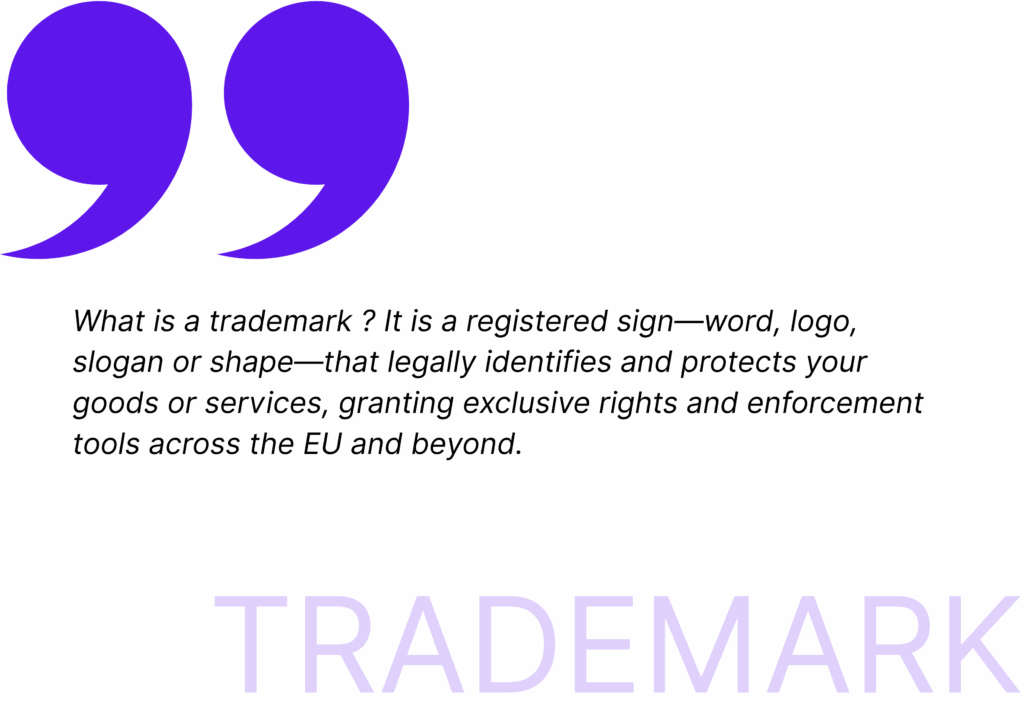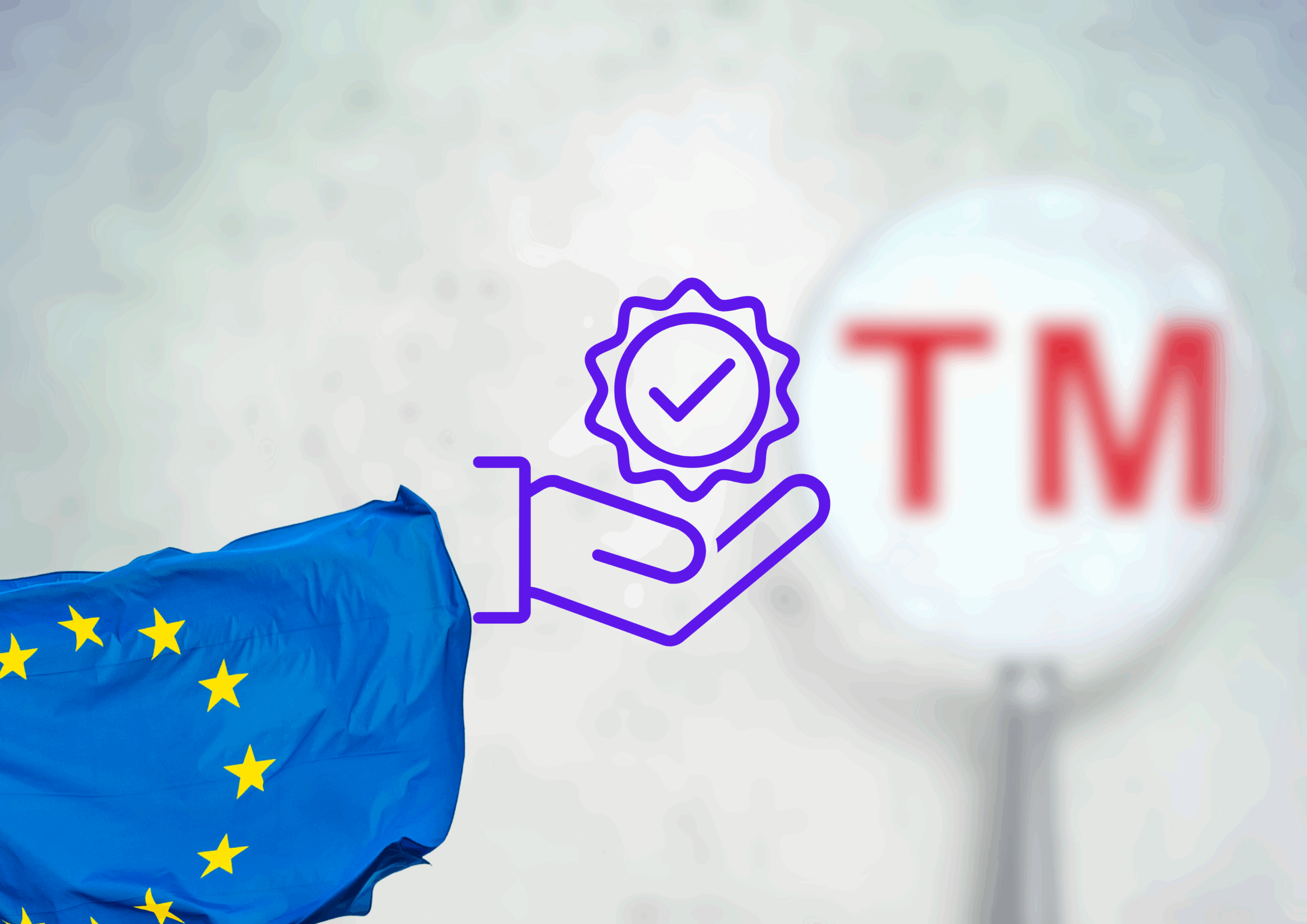What is a trademark ? It is a registered sign—word, logo, slogan or shape—that legally identifies and protects your goods or services, granting exclusive rights and enforcement tools across the EU and beyond.
Why trademarks matter for startups
However, many founders postpone registration until they encounter copycats. Secondly, investors often insist on formal ownership before funding. Thirdly, answering What is a trademark ? early allows a trademark attorney to clear conflicts, select classes and safeguard expansion.
In short, the absence of registration can slash your company’s valuation during due diligence because unprotected brand assets are hard to quantify.
Choosing a strong mark
Additionally, a distinctive mark—neither descriptive nor generic—stands a far better chance of registration and enforcement. Invented or arbitrary words like “Kodak” face fewer objections and oppositions than descriptive terms such as “Fast Laundry”.
Consequently, before adopting branding, conduct clearance searches across trade registers, domains and social media. Professional searches through EUIPO databases and national registers reveal earlier rights and reduce litigation risk, see EUIPO.
Types of signs you can register
Furthermore, EU law recognises not only word and figurative marks but also shapes, colours, motion, multimedia and sound marks, provided they can be represented on the register in a clear, precise, self-contained, easily accessible manner, see EUIPO.
Notably, scent and taste marks remain extremely rare because technical representation hurdles persist, although the legal door is not entirely closed.
Legal framework
Historically, trademark legislation in Europe evolved from guild signs in the Middle Ages to the modern Trade Mark Directive 2015/2436 and the EU Trade Mark Regulation 2017/1001, which harmonise standards and procedures across Member States.
Presently, these instruments ensure that criteria such as distinctiveness, non-descriptiveness and public order are uniformly applied, simplifying expansion for startups operating cross-border.
Beyond that, national courts apply harmonised criteria but still follow their own procedural rules; understanding these nuances helps a startup choose the right forum when enforcing.
Registration and enforcement in practice
Meanwhile, the EU offers three main filing routes: national offices, the European Union Trade Mark via EUIPO, and the Madrid international system administered by WIPO. Your choice depends on budget, growth plans and target markets.
Therefore, before pressing the ‘submit’ button, carry out a clearance search across EUIPO, national registers and internet domains to gauge risk and adapt your specification accordingly.
- Prepare a goods and services list under the Nice Classification (45 classes).
- File electronically with accurate owner details and a clear representation of the mark.
- Respond promptly to office actions or third-party oppositions within statutory deadlines.
- Use the ® symbol only after registration to deter infringers.
Conversely, what happens if someone copies your brand online? First, send a cease-and-desist letter referencing your registered rights; most platforms remove infringing content when provided with registration numbers. When German fintech N26 secured its EU mark early, it successfully forced a later “N27 Card” applicant to rebrand—saving courtroom costs and consumer confusion. Administrative customs watches can also block counterfeit shipments at EU borders, see EPO.
Costs and timelines
Likewise, budgeting is straightforward: an EUIPO application costs EUR 850 for one class, EUR 50 for the second and EUR 150 for each additional class. National fees vary—Germany charges EUR 300 for up to three classes—so compare totals before deciding.
For instance, a straightforward EU application with no objections can reach registration in eight months. In contrast, Madrid extensions may take 12–18 months because each designated office conducts its own examination, see WIPO.
Notwithstanding occasional delays, EUIPO’s fast-track procedure accelerates examination if you select approved terms from the database and pay upfront; most fast-track files receive a decision within 20 days.
Maintaining and exploiting your trademark
Ultimately, rights last 10 years from filing and renew indefinitely on payment of renewal fees and demonstrated use. Failure to use for five consecutive years can invite revocation actions.
Similarly, you can leverage your mark as collateral, license it to franchisees or enforce it against grey importers. Revenue streams from licensing often exceed the cost of registration many times over.
Incrementally, each renewal acts as a proof point of commercial success, signalling to investors and acquirers that the brand commands ongoing market traction and deserves premium valuation multiples.
Curiously, statistics from EUIPO show that SMEs owning at least one trademark generate 68 % more revenue per employee than those without such rights, underlining the tangible economic impact of registration.

Monitoring and policing
Equally, filing a mark is only half the job; continuous monitoring of official gazettes, online marketplaces and social media flags infringers early. EUIPO’s free eSearch alerts and commercial watch services automate surveillance, saving founders time.
Critically, swift action preserves the deterrent effect of registration. Delays can weaken claims for damages and allow bad-faith filers to anchor their own rights in jurisdictions where you have not yet expanded.
Proactively, many founders set up Google Alerts for their brand together with Customs Enforcement Database (COPIS) notices, creating a multilayered net that catches counterfeiters before they erode consumer trust.
To conclude, systematic monitoring—watch services, customs records and marketplace takedown tools—keeps competitors at bay and sustains brand equity. Finally, remember that trademarks interact with designs, copyrights and patents; coordinating these rights avoids gaps that litigants can exploit and positions your startup for multi-layered brand protection, see WIPO.
Early, precise registration backed by strategic monitoring is cheaper than fighting brand theft later.
Does an EU trademark cover the United Kingdom post-Brexit?
No, EU protection no longer extends to the UK; file a separate UK application.
How long does examination take at EUIPO?
Typically three to four months if no objections arise, plus a three-month opposition period.
Can two similar marks coexist?
Possibly, if used for unrelated goods or with a coexistence agreement, but risk analysis by a trademark attorney is critical.



